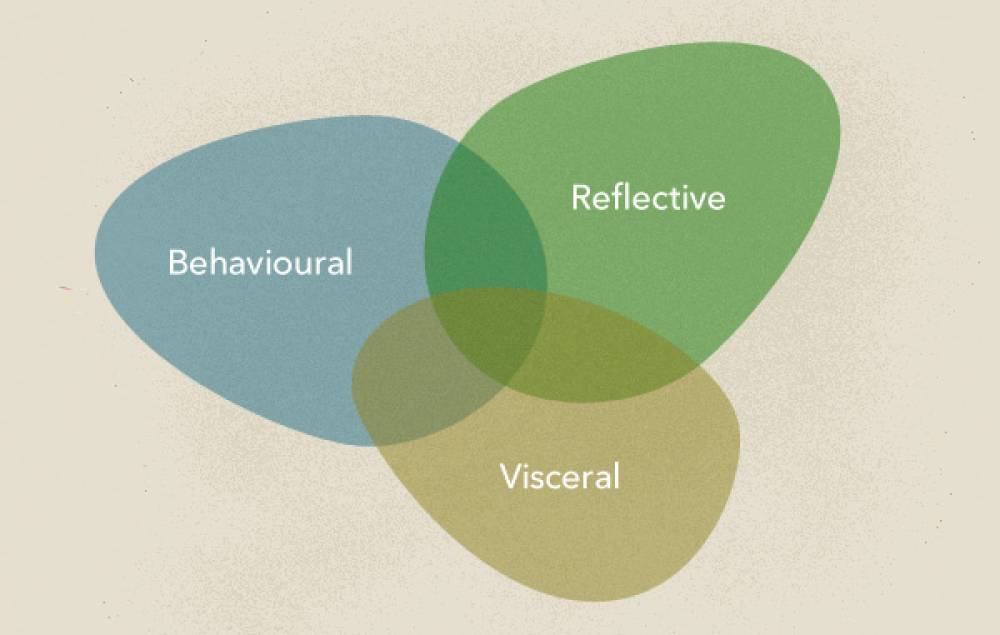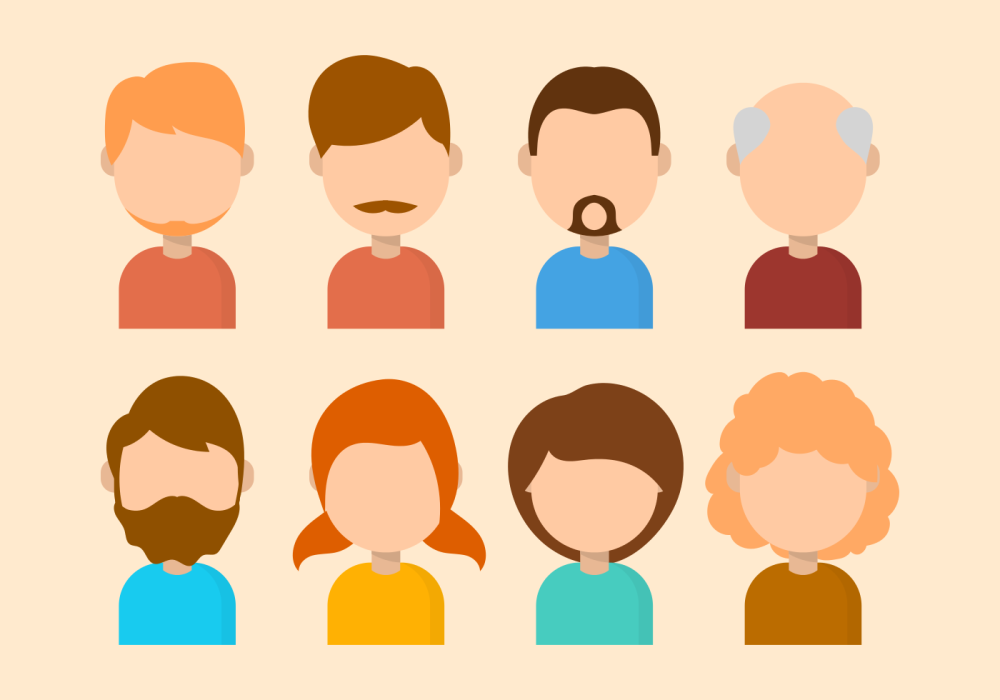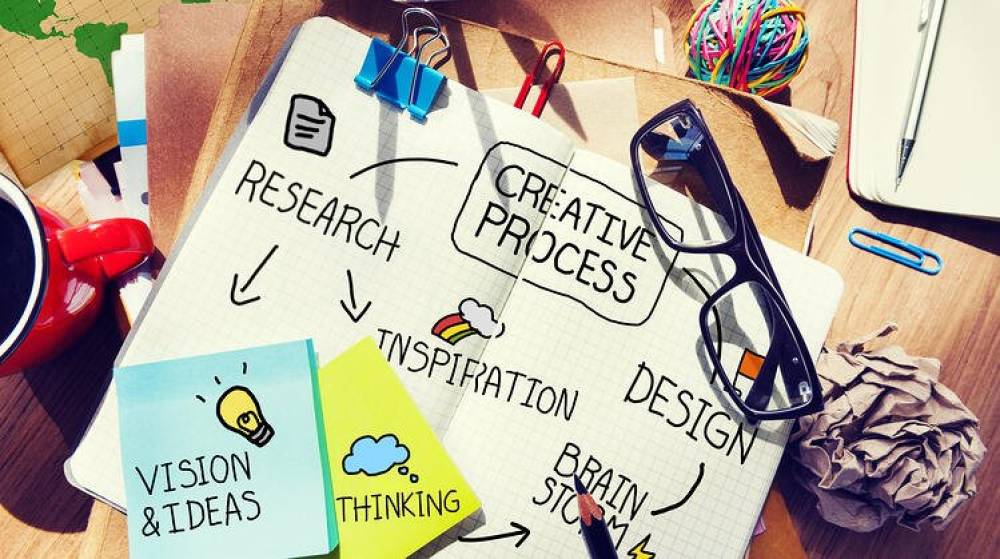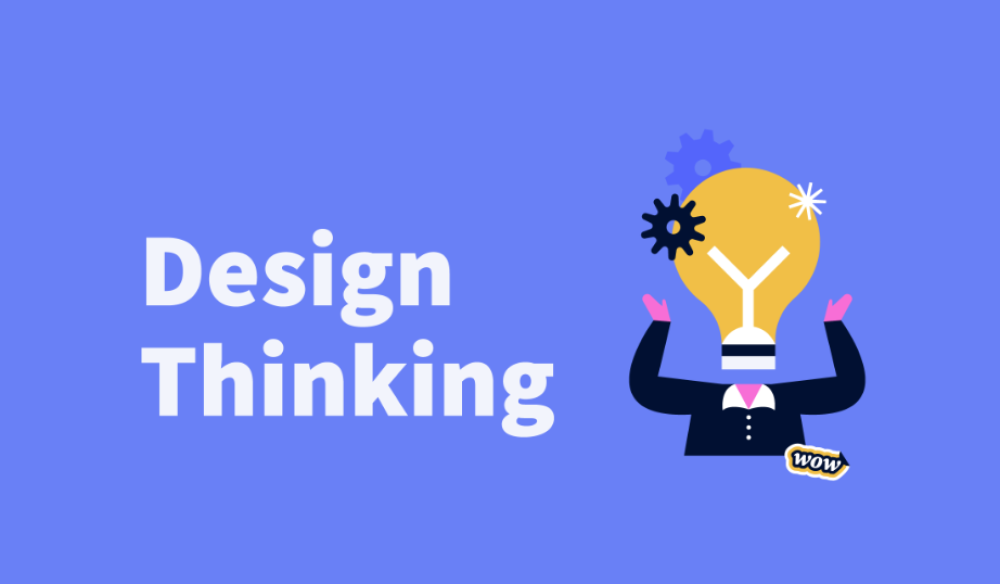

Norman's Three Levels of Design

Norman's Three Levels of Design
three levels of cognitive processing' model of human emotion. He suggests there are three distinct, yet interconnected levels of processing, which impact on the human emotional response to the things we use, observe, and simply come across in our everyday lives.
The three levels are visceral, behavioral and reflective processing. Collectively, they determine how we feel when interacting with an object. They also influence how we feel prior to (i.e. when we are simply looking at the thing) and after interaction (i.e. when we reflect upon the experience).
It is offer us a way of investigating and assessing designs, with the aim of predicting the emotional experiences one might have with a particular product.
Visceral Level of Processing :
taps into our unconscious attitudes, beliefs, views, feelings, preferences, and dislikes with sensory information (e.g., visible, audible and haptic (i.e. touch-based) characteristics) that bypasses deep, conscious processing. In order to elicit the desired emotional response in your potential customers, you must aim not just for beauty but aesthetic appear
In order to capture your potential users' or customers' attention, you must tap into the visceral level of cognitive processing. At this level, the perceptible qualities of the product – primarily the physical appearance, but, wherever possible, this also includes the auditory, haptic, smell and taste information – influence and shape our impression automatically , which allows us to make judgments instantly.
visceral design is essentially dealing with superficial qualities or the instantly perceptible characteristics of the product.
we must not confuse aesthetics with beauty. It would be unnecessary and in many cases inappropriate to aim for beauty.
Before stimulating some emotional response in your potential customers, you must first get their attention. It does not matter how functional, practical, effective, efficient or enjoyable your product is
Behavioral Level of Processing :
this level of processing is responsible for the majority of our everyday actions, such as making food and drink, traveling (e.g., walking, driving, and cycling), and typing.
Behavioral design is fundamentally concerned with use—how the users carry out their tasks and how the product can support them in carrying out the component actions required for successful, efficient and error-free goal completion.
how successful, enjoyable or efficient our interactions are with the things we come across in our everyday lives. For example, a touchscreen TV remote control may be attractive and tap into the visceral level of cognitive processing, but because your fingers can’t give you feedback about where they are placed (in contrast with a physical button remote), it requires that you shift your attention away from the TV and towards the remote every time you want to perform an action (e.g., change the volume). It may thus become annoying to use.
When there is a disconnect between the users’ actions/behavior and the results of these in the object, device, tool, etc. they are using, this represents a failure to support or complement behavioral processing.
Achieving harmony between product and user in this regard is the result of various factors, which collectively enable the users to accurately predict the results of their actions with the minimum of conscious effort. These factors include:
Visible interactive elements (as and when they are necessary)
If we are unable to see or find the operable parts, how are we going to establish what we can do? Ensure the parts necessary for a particular task are made available and are made apparent at the appropriate time.
Accurate Conceptual Models
When faced with any object, the beholders (i.e. those people encountering it) must determine what they can do with it and how they can carry out these possible functions.
Natural Mapping
acknowledges the human ability to extrapolate information derived from one situation to another. This is especially important when designing tangible devices used for the purpose of interacting with and manipulating characters, events, and elements within a graphical user interface.
Visible Results
When we interact with physical objects, this usually brings about some change in their perceptible state. For example, when we push a button on a remote control, we can feel the depression, hear the click, and (depending on how much our finger or thumb obscures the device) see it sink within the surrounding plastic body. These changes inform us that our actions have had some effect on the object.
Proportional and Meaningful Feedback
This is tied with the need for visible results, as not only must objects, both physical and graphical, change as a result of users' interactions; they must also inform the users, in a meaningful way, whether their actions have been successful or not. This is much less of an issue when dealing with physical objects, as there is a natural, intuitive relationship between real-world object-human interaction and the changes that occur in the object's state(s).
The Reflective Level of Emotional Design :
reflective processing is the only conscious form of processing. This process involves the active consideration of a product, encompassing how it relates to us personally, its place in our wider environment, and how it reflects upon us to own and use it. Reflective design is, therefore, concerned with how users rationalize and intellectualize a product according to highly personal and subjective factors (Norman, 2004). At this level, people might ask how the product fits in with their current self-image, whether it reflects upon them in a positive or negative way, whether they would be able to tell a personally meaningful story about it, and whether it would enable them to connect with other people.
Know your users
Essentially, if we are to design for the reflective level of the emotional design model, we must focus on what the product means to the intended user base, whether there is an existing set of attitudes towards the product or you are seeking to attach specific, meaningful messages to the product. Regardless of whether there is an established message attached or you are trying to impose meaning to your product, at the heart of reflective design is the user's self-image. The predominant opinion is that we must now influence users or potential customers on some emotional level. When products elicit some positive emotional response, it is assumed that we will feel a connection with the product, which is more likely to influence our behavior with that particular product and the brand.
Reflective design is the highest level of Norman,
At this level, we use information from both visceral and behavioral processing (i.e. the other layers) in combination with our knowledge and experiences. Unlike the visceral and behavioral levels, reflective processing does not have direct access to sensory information. Instead, sensory information is filtered through the unconscious levels of processing (i.e. visceral and behavioral), which influences our perspective and thoughts as a result. Reflective design presents the biggest challenge to us as designers, as customers and users have different opinions, attitudes, memories, and life experiences which are called upon when we make value judgments during reflective processing. To tap into the reflective level successfully, we must investigate what users want from our products, not just in terms of how they intend to use them but also how they might fit into and enhance their lives.




